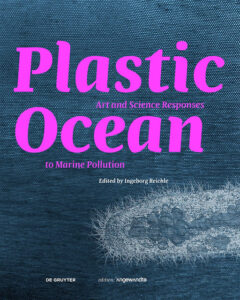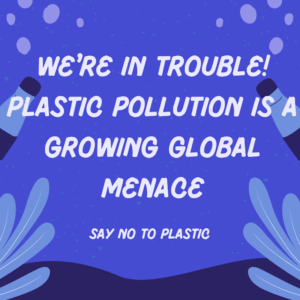The Tragedy of King Midas: A Cautionary Tale about Plastic Pollution
King Midas requested that everything he touched turn to gold when the gods gave him one wish. Midas enjoyed himself. Buildings, rocks and trees are all made of gold. However, he soon discovered to his horror that his food had also transformed into gold. He tried to comfort himself by giving his daughter a hug but he realised his error too late. The world’s richest man was hungry, heartbroken and by alone. When we discovered how to transform brown, stench-filled slime into magic known as plastic, humanity’s dream was also fulfilled. Our lives were revolutionised by this cheap, antiseptic and convenient technology, yet it went out of control.
Plastic Pollution Is Now Making Its Way Into Our Bodies
Our environment is overrun with plastic. It has spread throughout the animals we consume and now it is entering our bodies.
The Terrible Truth About Plastic Pollution
For the majority of human history, we built the things we needed out of materials we found in nature. However, the development of plastic about 100 years ago fundamentally altered our world. Polymers are lengthy, repetitive chains of chemical groups that are used to make plastic. Polymers are found all across the natural world, including in DNA, silk, hair, insect carapaces and cell walls. However, it is also feasible to produce them. We are able to create new synthetic polymers by disassembling crude oil into its constituent parts and rearrange them.
The Terrifying Reality of Plastic Pollution | The Truth About Plastic Pollution | The Scary Reality of Plastic Pollution
The properties of synthetic polymers are amazing. They can be shaped into practically any shape and are lightweight and strong. The golden age of plastics began because plastic does not require labor-intensive physical labour and can be produced in large quantities using cheap, abundant basic ingredients. Today, practically everything is composed of plastic to some extent. Previously, materials like nylon and bakelite were used for clothing and mechanical parts, PVC was used for plumbing and electrical gears and casings, and acrylic served as a shatter-resistant substitute for glass. Our homes, cars, phones, laptops, furniture, and appliances. Long ago, plastic stopped being a revolutionary material and turned into rubbish. coffee mugs, plastic bags or materials for banana wrapping. We don’t give this fact much thought. Plastic merely shows up and disappears. Sadly, no, it doesn’t.
We’ve Been Deceived: The Consequences of Plastic Pollution
Plastic takes between 500 and 1,000 years to decompose because synthetic polymers are so strong. But somehow, we all agreed to utilise this incredibly durable material for items that would be discarded. The packaging industry uses 40% all polymers. Packaging accounts for one-third of the waste produced annually in the US. Since it’s invention, we have produced about 8 billion metric tonnes of plastic. 335 million tonnes just in 2016. Since 1907, more than 6.3 billion metric tonnes of plastic have been wasted. That creates a cube with 1.9 kilometres sides when it is all piled together in one location.
Plastic Pollution: What Are We Doing With All This Rubbish?
What exactly did we do with all of this rubbish, then? 12% was burned, and 9% was recycled. However, 79% of it is still present. There is a lot of ocean waste. Every year, about 8 million tonnes. By 2050, there will be more plastic in the ocean than there are fish. Due to its ubiquitous nature, plastic keeps entangling and engulfing marine life. Already in 2015, 90% of seabirds had consumed plastic. With intestines stuffed with unpalatable waste, many animals become hungry. A dead sperm whale washing ashore in Spain in 2018. 32 kilos of plastic bags, nets, and a drum had been consumed by him. Even though this is terrible and makes for excellent magazine covers, there is another, invisible sort of plastic that is even more pervasive.
The 5 Millimeter Microplastics You Didn’t Know Were Making Their Way Into Your Teeth
Over 5 millimeter-sized fragments are considered microplastics. Some of them are utilised in toothpaste or cosmetic products, but the majority come from floating garbage that is constantly exposed to UV light and breaks down into ever-tinier particles. 51 trillion of these particles float in the ocean, where all types of marine life can consume them even more quickly. Scientists are concerned about this, particularly the potential health dangers posed by the chemicals added to plastic. For instance, BPA makes plastic bottles transparent, but there is evidence that it may potentially affect our hormonal balance. DEHP increases the flexibility of plastics yet may be carcinogenic. If microplastics are poisonous, it would be really awful because they move up the food chain.
The Shocking Truth About Plastic Pollution in Our Food
Microplastic is eaten by zooplankton. Zooplankton is eaten by little fish. Oysters, crabs, and fish that hunt prey all end up on our plates. Microplastics have been discovered in a variety of foods, including beer, honey, sea salt, beer, tap water, and household dust. Phthalates, a common plastic ingredient, are found in significant concentrations in the bodies of 8 out of 10 infants and almost all adults. And BPA is present in 93% of people’s urine. There hasn’t been much research done on this, and the results are still ambiguous. Before fear is warranted, much more investigation is required. However, it is reasonable to say that a number of things transpired that we had not anticipated. Additionally, we have lost some control over plastic, which is somewhat unsettling. But we should definitely outlaw plastics, right?
Plastic Pollution is Just the Tip of the Melting Iceberg
It’s a little more complicated than that, regrettably. The issue of plastic pollution is not the only one affecting the environment. Some of the alternatives to plastic that we might utilise have a higher overall environmental impact. For instance, a recent study by the Danish government found that producing a single-use plastic bag uses so little energy and generates so few carbon dioxide emissions compared to a reusable cotton bag that it would take 7,100 uses of the cotton bag to have a lower environmental impact than the plastic bag. All that’s left is a convoluted sequence of trade-offs. Finding the ideal balance between them is challenging because everything has an effect in some way.
How Plastic Pollution is Wreaking havoc on our Planet
Plastic also aids in the resolution of issues for which we currently lack adequate solutions. One-third of the food produced worldwide is never consumed and ends up spoiling in landfills, where it releases methane. And plastic packing is still the greatest way to keep food from rotting and save waste. It’s crucial to understand where the majority of the world’s plastic pollution is now coming from. Just ten rivers in Asia and Africa are responsible for 90% of the plastic debris that enters the ocean through rivers. Each year, the Yangtze alone in China discharges 1.5 million tonnes of plastic into the ocean. Industrialization accelerated dramatically in recent decades in nations like China, India, Algeria, and Indonesia, changing the lives of billions of people.
The Negative Impacts of Plastic Pollution You Didn’t Know About
Because of how quickly this expansion occurred, the infrastructure for disposing of waste was unable to keep up with the amount of new waste it brought. Investing in infrastructure in poor nations is as crucial to addressing this issue as battling plastic pollution at home with campaigns and redesigning products to reduce excessive plastic production.
We’re In trouble! Plastic Pollution Is A Growing Global Menace
Bottom Line: We won’t be able to stop plastic pollution as long as we don’t approach it from a global standpoint. The issue of plastic contamination is complex. We had a great time with the magic material we discovered, but we must exercise caution lest, like Midas, we find ourselves in a world we did not intend. Even so, each of your daily behaviours has a significant impact. Your actions matter! Reject single-use plastics. Encourage your family and close friends to follow suit. Demand action from businesses and governments to maintain the safety of our food supply and the cleanliness of our waters. We can eliminate plastic pollution by working together!




